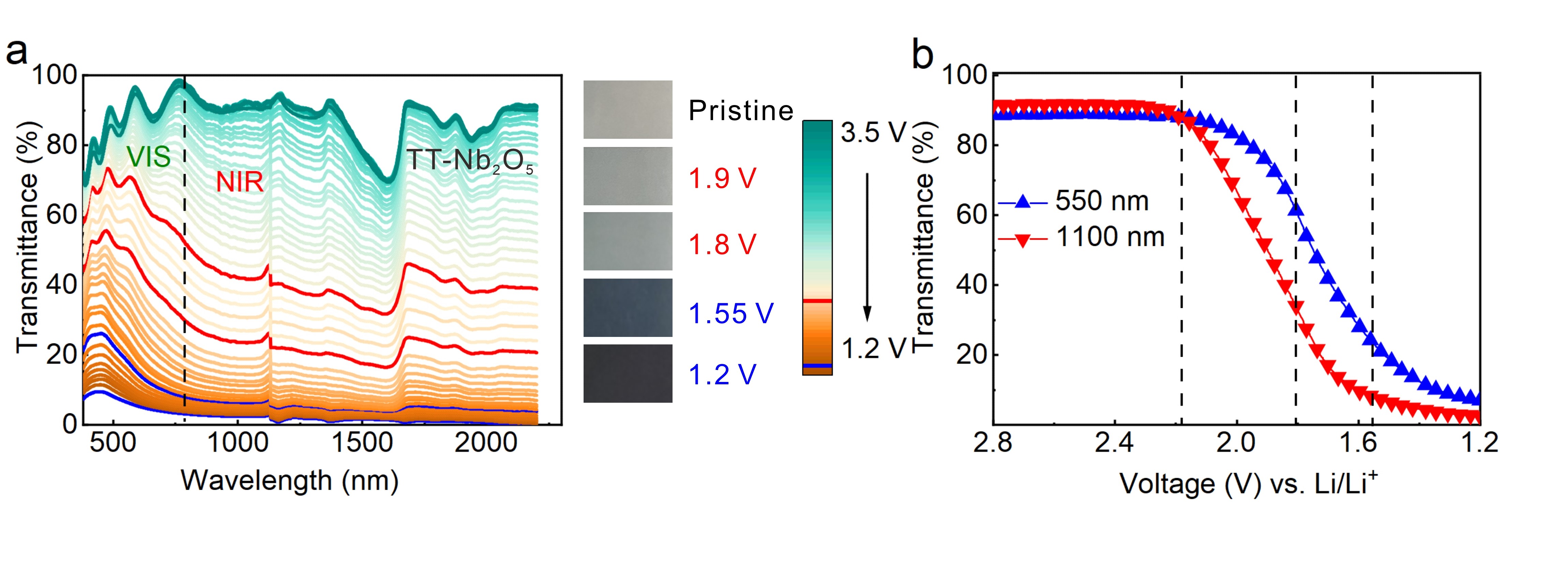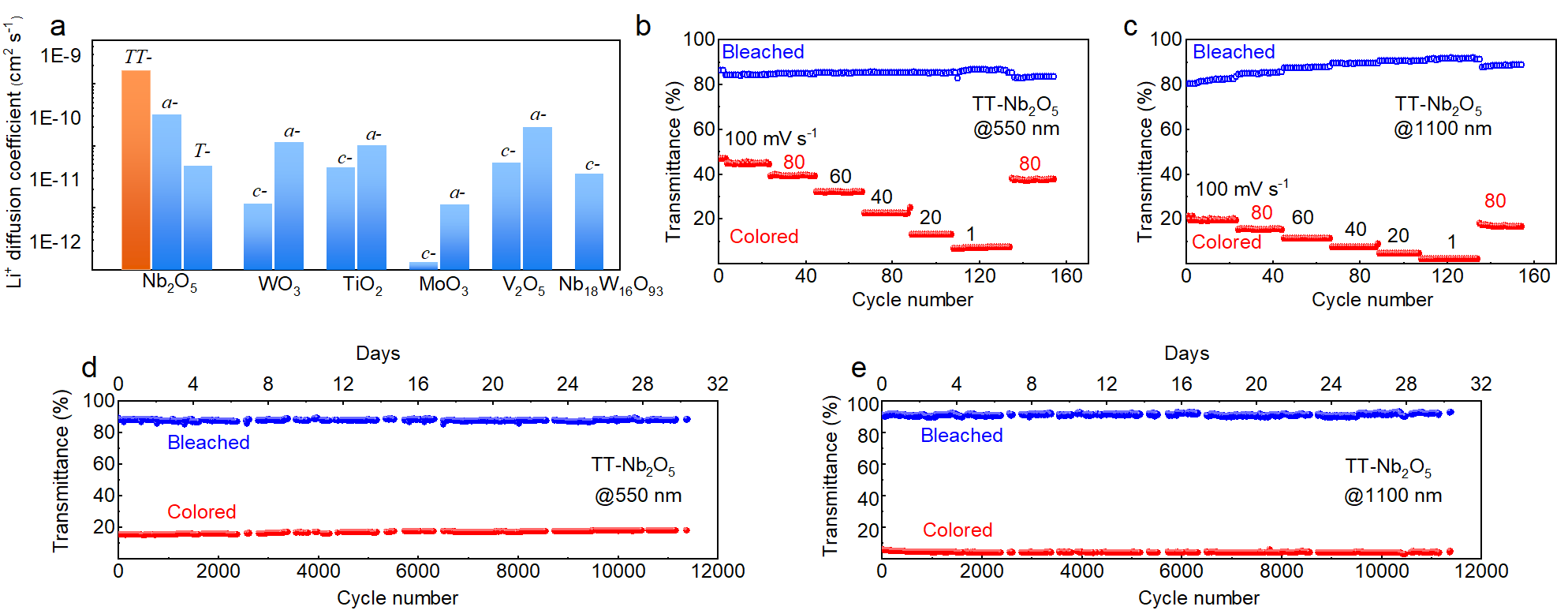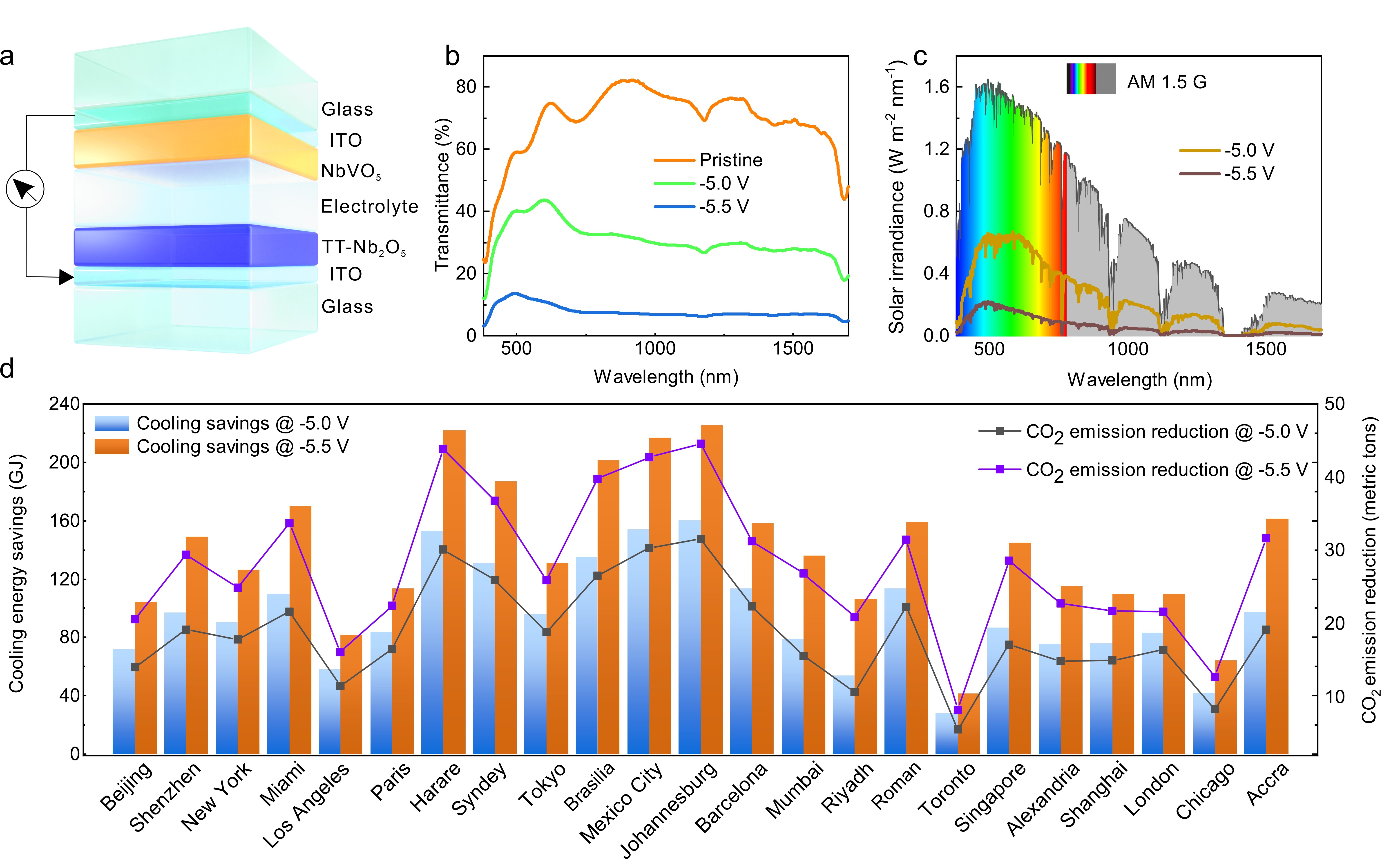Efficient management of lighting and energy consumption has long been a critical challenge. Dynamic, reversible modulation of solar spectrum transmittance—particularly in the visible (VIS) and near-infrared (NIR) ranges—is essential. However, traditional electrochromic devices often suffer from key limitations, including the inability to independently regulate VIS and NIR light, slow switching speeds, and performance degradation over time.

The research group led by Associate Professor Rui-Tao Wen from the Department of Materials Science and Engineering at the Southern University of Science and Technology (SUSTech) has made new progress in the field of dual-band electrochromic materials.
Their work has been published in the National Science Review with the title “TT-Nb₂O₅ with dual-band modulation and exceptional performance retention for fast-responsive electrochromics”.

Figure 1. Schematic diagram of the dual-band modulation characteristics of TT-Nb2O5 thin films
The TT-Nb₂O₅ reported in this study acts like a “hexagonal warrior” in the electrochromic community, addressing these challenges. TT-Nb₂O₅ enables independent modulation of VIS and NIR light, offering three working modes: a bright mode (high transmittance), a cool mode (blocking NIR), and a dark mode (blocking both VIS and NIR). Thanks to its unique two-dimensional layered structure—comprising alternating dense and loose atomic layers—TT-Nb₂O₅ provides rapid ion transport pathways with minimal steric hindrance, leading to ultrafast switching kinetics.

Figure 2. Fast response kinetics and cycling stability of TT-Nb2O5
The distinct ionic binding sites within the 4h layers also allow precise dual-band control. As ion insertion progresses, selective absorption occurs: at x=0.3 in LixNb₂O₅, lithium ions coordinate with O3c sites to absorb NIR light, and at x=0.77, they coordinate with O2c sites to absorb VIS light. This dual-band modulation mechanism is fundamentally different from traditional strategies relying on localized surface plasmon resonance (LSPR) in nanocrystals and polaron hopping in amorphous matrix.
Importantly, TT-Nb₂O₅ maintains remarkable cycling stability. Its open-channel layered framework prevents volume expansion and phase transitions during ion insertion and extraction, achieving over 10,000 cycles without observable optical modulation degradation. Prototype smart windows fabricated with TT-Nb₂O₅ demonstrated outstanding energy-saving potential. Simulations indicate that, in hot climate zones, the “cool mode” operation can achieve up to 160 GJ cooling energy savings without compromising visible transmittance, while the “dark mode” operation can save up to 225 GJ. This translates to a substantial reduction of 31.5 to 44.5 metric tons of CO₂ emissions annually for medium-sized office buildings.

Figure 3. Global energy-saving and emission-reduction potential assessment of smart windows
This study highlights that dual-band modulation can be achieved without relying on nanocrystals, paving the way for large-scale, continuous film fabrication using methods such as magnetron sputtering.
Dr. Qingjiao Huang is the first author of the paper, and Associate Professor Rui-Tao Wen is the corresponding author. Professors Guangfu Luo and Changjian Li made significant contributions to the DFT calculations and STEM analysis.
Paper link: https://doi.org/10.1093/nsr/nwaf154
To read all stories about SUSTech science, subscribe to the monthly SUSTech Newsletter.
Proofread ByAdrian Cremin, Yuwen ZENG
Photo ByDepartment of Materials Science and Engineering